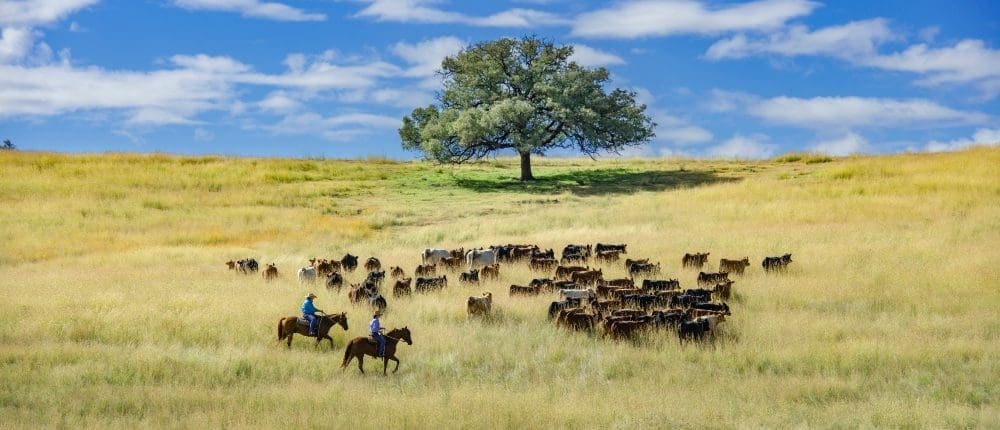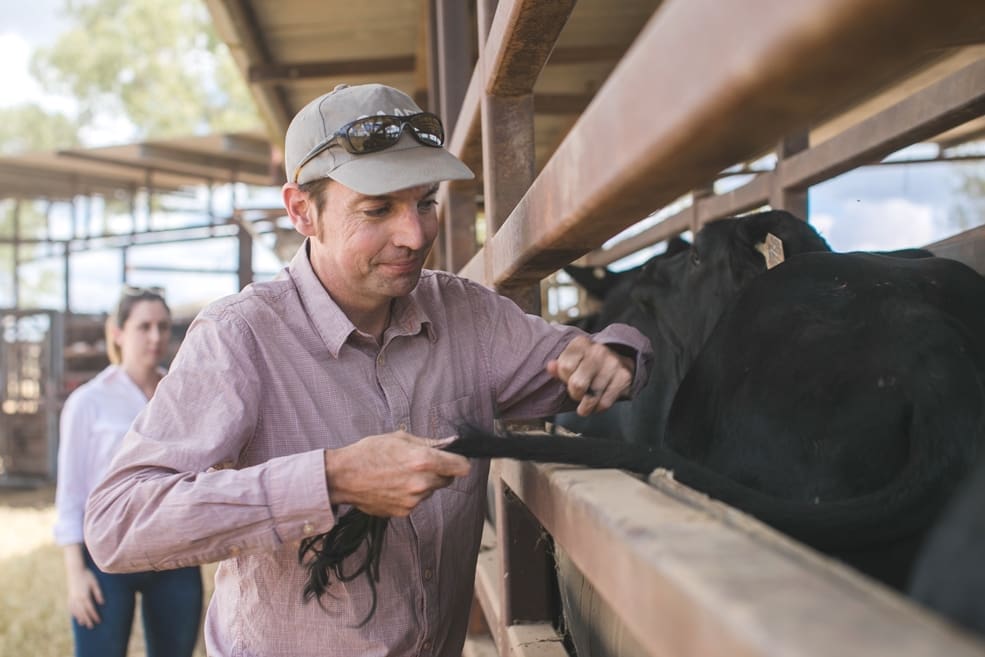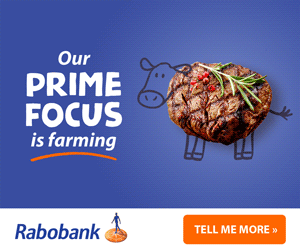
RESEARCHERS are working on projects that could reduce methane emissions in Australia’s $14.6 billion beef cattle industry by as much as 30 percent.
Professor Ben Hayes from the Queensland Alliance for Agriculture and Food Innovation said the four projects at The University of Queensland each had the potential to reduce methane emissions in livestock by 20 to 30pc and if successful, could be applied simultaneously. Some of the project work will be outlined during this week’s TropAg 2022 research conference taking place in Brisbane.

Prof Ben Hayes taking a tail hair sample for DNA analysis from cattle near Rockhampton
A number of beef-producing countries around the world are working on methane mitigation projects for beef. Click here to view last week’s story outlining Ireland’s efforts to target a 25pc reduction in methane output in cattle through selective breeding and genetics.
The approach being undertaken at UQ over methane reduction was multi-pronged, rather than relying on a single technology, Prof Hayes said.
“If the projects are successful, it will lead to quite substantial reductions in methane emissions for the beef industry, and that’s really important as a social licence to continue operating and market access into the future,” he said.
More than $17 million has been allocated to the work by Meat & Livestock Australia and UQ as part of MLA’s goal for Australia’s red meat industry to be carbon neutral by 2030 (CN30).
Here’s a snapshot of the four research projects:
The first is Low Emission Saliva Test for Ruminants (LESTR), led by Dr Elizabeth Ross.
The idea uses gene sequencing technology to profile the genomes of the microbes in the stomach of livestock, identifying key traits such as methane and feed efficiency.
“LESTR builds off sequencing technology developed as a result of the COVID pandemic,” Prof Hayes said. “We’re taking that technology, translating it, and using it in this project.”
A second project involves using biopolymers to deliver slow-release bioactive compounds that help reduce the methane emitted by cattle and sheep. The project is being led by Prof Mary Fletcher in collaboration with the Queensland Department of Agriculture and Fisheries.
The biopolymer project is using sophisticated biodegradable biopolymers developed by UQ’s School of Chemical Engineering. The aim is to develop biopolymer devices that can be inserted in the stomach of cattle to deliver a continuous low dose of bioactive.
“We want the technology to fit in with the normal management strategies of northern cattle producers, to find a solution that doesn’t create a major impost in these extensive pastures where daily dosing is simply not practical,” Professor Fletcher said.
“We’re hoping that cattle producers can make it part of their normal six monthly or annual program, so when they bring the animals in for the normal weighing and assessment treatments that this just forms part of the normal cycle,” she said.
“The treatment could be administered in the yard before the cattle are returned to pasture without greatly adding to labour involved.”
 The biopolymer impregnated with the bioactive is used to make a rumen bolus — a cylinder-shaped object the length of a human hand. The rumen bolus will sit within the animal’s stomach where it will be degraded by bacteria over time, releasing bioactive and leaving no residue. Similar biopolymers are already used in human medicine for implantable drug delivery systems.
The biopolymer impregnated with the bioactive is used to make a rumen bolus — a cylinder-shaped object the length of a human hand. The rumen bolus will sit within the animal’s stomach where it will be degraded by bacteria over time, releasing bioactive and leaving no residue. Similar biopolymers are already used in human medicine for implantable drug delivery systems.
The ability to ensure each animal receives a sustained dose of a methane-reducing active agent over an extended time would be a fantastic win for the beef cattle industry, helping it achieve its goal to reduce methane emissions – particularly in cattle grazing extensive pastures. If successful, the biopolymer biotechnology could also be used to administer other types of treatments to cattle.
Prof Hayes himself will run another project on reducing emissions and improving profitability in Northern Australian beef, while a fourth line of research is focussed on reducing emissions of cattle being prepared for feedlots, as well as other international collaborations.
“I think using these innovative technologies together will get us where we need to be, which is net zero emissions,” Prof Hayes said.
Consumer sentiment
MLA managing director Jason Strong said the industry service delivery company had committed $140 million towards new technologies in this area, including the substantial investment with UQ.
“We know there is growing interest from our global customers and consumers around where food is from and how it’s produced,” Mr Strong said.
“While carbon neutrality is not a major driver yet, MLA’s most recent research into consumer sentiment shows that 56 percent of metropolitan Australians would feel more positive about the red meat industry if emissions were reduced to net zero by the end of the decade.”
Prof Hayes said agriculture, particularly in the cattle grazing area, has an enormous opportunity to reduce emissions, perhaps more so than in some other industries.
“If the industry can achieve net zero, it has a wonderful product, very high nutritional content, excellent protein qualities as well as having reduced environmental impact.”
Source: QAAFI
